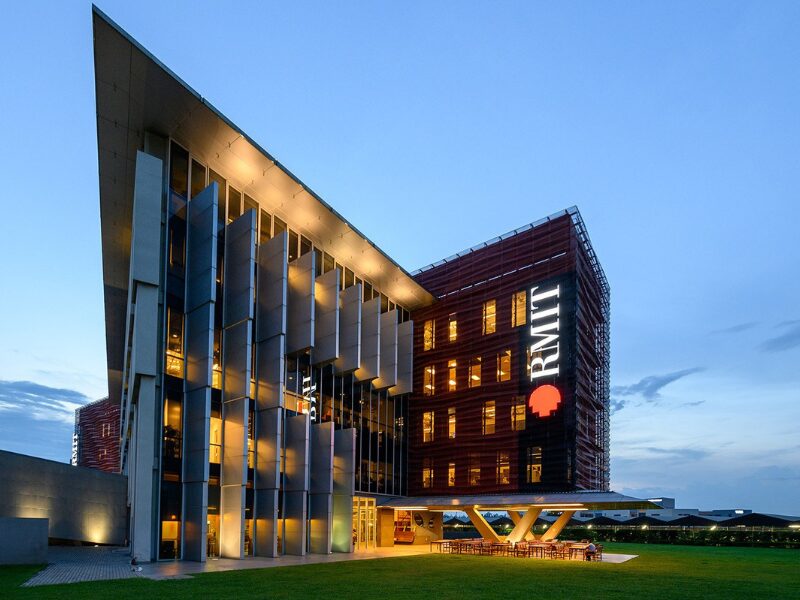Contents
Vietnam Education Investment continues to attract global attention. RMIT University Vietnam, an Australian institution with campuses in Ho Chi Minh City and Hanoi, reported impressive financial results for 2024. Its total revenue reached approximately $145 million USD (equivalent to 223.5 million AUD or 3,831 billion VND). This marks a slight 1% dip from 2023. However, the figure highlights RMIT’s dominance in the sector. On average, the university generates about $400,000 USD daily. For foreign investors, this underscores the potential in Vietnam’s education landscape, where demand for quality programs drives steady growth.
RMIT Vietnam’s Leadership in Revenue
RMIT’s revenue far exceeds that of many local universities. For instance, it equals the combined earnings of Hanoi University of Science and Technology ($60 million USD), Ton Duc Thang University ($49 million USD), and Can Tho University ($45 million USD). With around 12,000 students enrolled, RMIT offers high-demand courses like business administration, information technology, design, communication, and fashion. The average tuition for an undergraduate program exceeds $40,000 USD per student over the full course.
Moreover, RMIT’s model appeals to international investors. As Vietnam Education Investment evolves, institutions like RMIT benefit from strong enrollment and premium pricing. This positions them as low-risk opportunities in a market where Vietnam’s higher education market is projected to grow by $616.5 million from 2025 to 2029.
Top Universities in Vietnam Education Investment
Several Vietnamese universities have crossed the $40 million USD revenue threshold. Here are key players:
- Nguyen Tat Thanh University: $67 million USD, up nearly $8 million from 2023, serving over 32,000 students.
- Ho Chi Minh City University of Technology (HUTECH): $55 million USD, a $5 million increase, with more than 37,000 learners.
- Hanoi University of Science and Technology: $60 million USD, educating over 41,000 students.
- Ton Duc Thang University: $49 million USD, maintaining 26,000 students.
- Can Tho University: $45 million USD, including state support, training around 40,000 individuals.
These institutions grow by expanding enrollment by 500–1,000 students annually. Additionally, they adjust tuition by 5–10% each year. For investors, this trend signals robust returns in Vietnam Education Investment.
Dominant Revenue Sources: Tuition Fees Lead
Tuition remains the core revenue driver for most universities. Nguyen Tat Thanh University derives 99% from fees, ranging $1,000–1,600 USD yearly, with no mid-program hikes. HUTECH gets 95% from tuition, averaging $2,100–2,500 USD per year. Ton Duc Thang draws 92%, at $1,200–3,400 USD annually.
In contrast, Can Tho University relies on tuition for just 65% ($900–1,600 USD yearly). The rest comes from research (19%), state funding (11%), and other sources (5%). Thus, it boasts the highest non-tuition share in the group.
Approaching the $40 million mark are Hanoi Foreign Trade University ($38 million USD), Hanoi University of Industry ($37 million USD), and Hong Bang University ($34 million USD). These rely heavily on fees but show potential for diversification.
Expert Insights on Vietnam Education Investment Opportunities
Experts note that university revenue growth reflects Vietnam’s push for financial autonomy. However, over-reliance on tuition poses risks. To sustain progress, institutions must boost income from research, international partnerships, and technology transfer.
From an investment viewpoint, the sector is ripe for foreign capital. As of February 2025, Vietnam hosts 707 FDI projects in education. The overall market grows at a 7.8% CAGR through 2032. For instance, opportunities for foreign investors in Vietnam’s education sector include joint ventures and EdTech integrations.
Additionally, RMIT University Vietnam exemplifies success through global standards and campus expansions, which often involve real estate investments. This ties into broader Vietnam investment trends, where education infrastructure demands modern facilities. Investors can capitalize on this by funding campus developments or program innovations, enhancing returns amid rising enrollment.
In summary, Vietnam Education Investment offers high potential. RMIT’s performance sets a benchmark, encouraging diversified strategies for long-term stability.





Join The Discussion